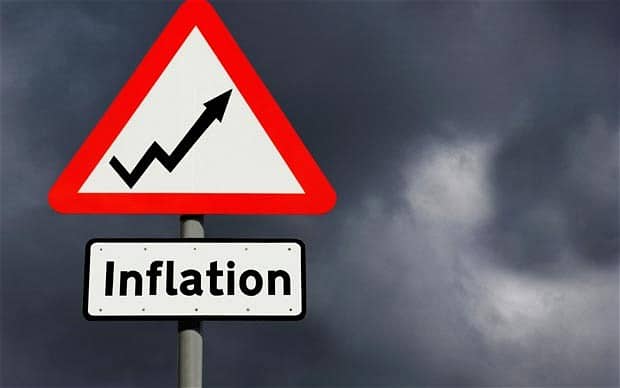The finance ministry’s February economic update and prognosis indicate that inflation in Pakistan will likely stay around 28–30% for several months.
Interest payments would increase total expenditures, reducing budgetary room for routine operations, investments, and social and structural reforms.
The ministry cited the “uncertain political and economic environment, pass-through of currency devaluation, the recent spike in energy costs and increase in administered prices” in its monthly report on Tuesday.
Despite the SBP’s contractionary monetary policy, inflationary pressures will take time to ease. The study said the federal and provincial governments are constantly monitoring the demand-supply imbalance of critical products and taking steps to stabilize prices.
Restarting an economic stabilization program would stabilize the economy and exchange rate and allow the country to benefit from lower commodity prices.
“This would also assist in curb cost-push inflation and offer a cushion for the government to pass through the lower commodity prices to domestic consumers,” it said.
The report said favorable weather and farmer input uptake could assist in fulfilling the 28.4 million tonnes of wheat objective, while Kissan package disbursements should boost agricultural output and economic activity.
In December 2022, large-scale manufacturing (LSM) activity was as expected, indicating no unexpected shocks. LSM’s cyclical pattern is positively associated with Pakistan’s primary trading partners.
The global economy remains unclear. Pakistan’s key export areas had negative CLIs compared to historical norms.
Seasonal factors are expected to boost LSM in January. However, the ministry predicted that LSM output might modestly fall YoY due to the large base impact in the reference year.
The average Monthly Economic Indicator (MEI) was positive in the first seven months of the current fiscal year but slightly negative in the last four. Moreover, MEI has declined since October 2022, although it improved in January.
Due to the economic slowdown in Pakistan’s typical export markets, goods exports fell 11.7% in January 2023, while services exports rose 17.3%.
In January, exports fell 4.3% MoM due to a seasonal effect, while imports continued to fall. Therefore, the trade balance improved, reducing the current account deficit to $242 million from $290 million in December.
January remittances fell to $1,894 million from $2,102 million in December 2022.
After exchange rate modifications, remittances should recover. As a result, the current account improved further.
The fiscal sector performed well despite local and external constraints. As a result, the primary balance remained surplus, but the fiscal deficit per GDP remained the same as last year.
The government’s expenditure management plan reduced federal non-mark-up expenditures by 3.9% due to lower subsidies and grants.
The Benazir Income Support Programme (BISP) and poverty alleviation fund allow the government to spend more on disadvantaged groups. The ministry said that tax and non-tax collections have increased despite a decrease in economic activity.
In particular, FBR tax collection grew above 18% in the first seven months of the current fiscal year. “Encouragingly, domestic tax collection, particularly direct taxes, are expanding at quick speed reflecting efficient execution of administrative and enforcement measures,” it said.
Even with the recently imposed Rs170 billion extra taxes, increasing tax collection will help fulfill the full-year objective.






